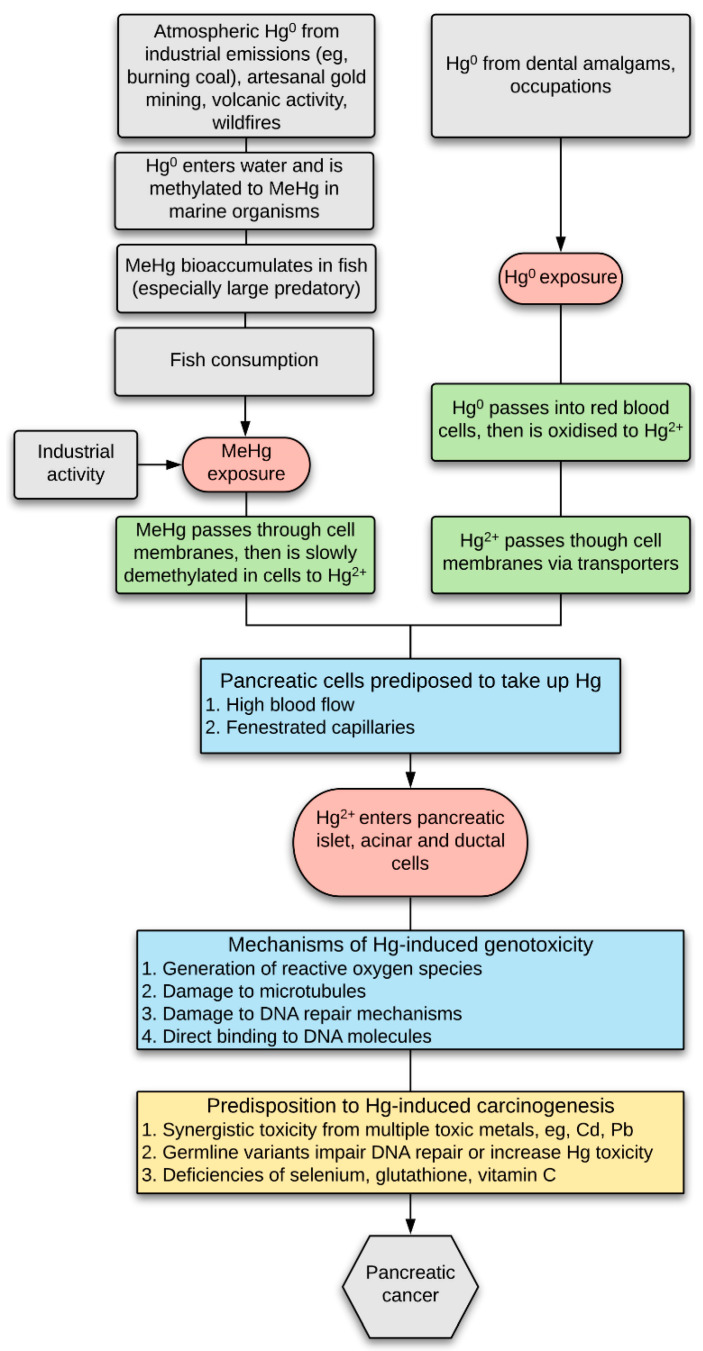Figure 1.
Hypothesis of mercury-induced pancreatic cancer. Mercury (Hg) exposure in humans is common due to the uptake of either (1) methylmercury (MeHg), which is slowly converted in cells to more toxic divalent mercury cations (Hg2+), and (2) mercury vapour (Hg0) which is converted to Hg2+ in red blood cells and then passes into cells via transporters. Pancreatic islets, and nearby acinar and ductal cells, are susceptible to the uptake of xenobiotics since they have a high blood flow and fenestrated capillaries. Mercury can trigger carcinogenesis either through the production of oxygen free radicals, damage to microtubules and DNA repair mechanisms, or direct damage to DNA [10]. People are more predisposed to mercury-induced carcinogenesis if they have been exposed to multiple toxic metals (including Cd and Pb), if they have germline variants that reduced DNA repair or increased mercury toxicity, or if they have deficiencies of selenium or other anti-mercury defences.

